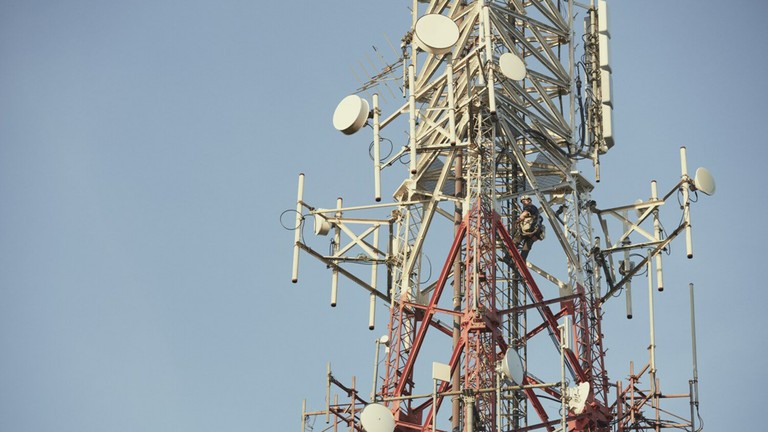Advanced Antenna Systems (AAS) For 5G Networks
- Overview
As consumer and enterprise demands for throughput, better user experience, and ubiquitous coverage continue to grow, operators are rapidly improving and expanding the coverage and capacity of their wireless networks in a cost-effective manner.
Recent technological developments have made advanced antenna systems (AAS) a viable option for large-scale deployment in existing 4G and 5G mobile networks.
AAS supports advanced beamforming and multiple-input multiple-output (MIMO) techniques, which are powerful tools to improve end-user experience, capacity, and coverage. These advances have made mmWave communications, which were difficult to achieve nearly decades ago, manageable today.
In addition to high-band spectrum, existing low-band and mid-band spectrum is critical to support 5G NR deployments. Initially, 5G NR will be deployed primarily in time division duplex (TDD) bands, as well as mmWave and sub-3 GHz frequency division duplex (FDD) bands, depending on the network operator's spectrum portfolio.
With optimized deployments, 5G peak throughput speeds can deliver up to eight concurrent downlink streams at 20 Gbits/sec and four concurrent uplink streams at 10 Gbits/sec.
AAS are critical to many 5G services and use cases. Over the past five years, the use of active antenna systems (AAS) has significantly improved coverage and capacity, and this trend will continue in a variety of environments for future 5G wireless networks.
- Key Aspects and Benefits of AAS for 5G
Advanced Antenna Systems (AAS) are crucial for 5G networks, enabling technologies like Massive MIMO and beamforming to improve network performance, capacity, and coverage. AAS integrates antennas with hardware and software, including signal processing algorithms, to support these features.
Key aspects of AAS for 5G:
- Massive MIMO: Utilizes a large number of antennas at both the base station and the user device to increase capacity and data rates. For example, a 64x64 Massive MIMO system means 64 antenna elements at the base station and 64 at the user device.
- Beamforming: Directs radio waves in a focused beam towards the user, improving signal quality and coverage.
- Multi-input, multi-output (MIMO): Enables multiple data streams to be transmitted and received simultaneously, enhancing network capacity.
- High-Frequency Bands: 5G antennas must support both low- and high-frequency bands (Sub-6 GHz and mmWave) to accommodate different 5G use cases.
- Compactness and Low Latency: 5G antennas are designed to be compact and have low latency, which is crucial for real-time applications.
- Weather Resistance: 5G antennas need to be durable and withstand harsh weather conditions.
Benefits of AAS in 5G:
- Increased Capacity: AAS significantly improves network capacity by supporting more users and higher data rates.
- Improved Coverage: Beamforming and MIMO techniques enhance signal coverage, extending network reach.
- Enhanced User Experience: AAS provides a more reliable and faster network connection, leading to a better user experience.
- Support for mmWave: AAS is essential for deploying mmWave technology, which offers very high speeds but also requires more advanced antenna systems.
- Key Features and Technologies of AAS
Advanced Antenna Systems (AAS), also referred to as Active Antenna Systems (AAS) or Massive MIMO systems, are antenna arrays with integrated hardware and software that enable advanced 5G communication features. They use multi-antenna techniques like beamforming, MIMO, and SDMA to improve network performance, capacity, and coverage.
Key Features and Technologies:
- Antenna Array: AAS utilizes an antenna array, which is a group of individual antennas arranged in a specific way to create a more powerful and directional signal.
- Beamforming: This technique allows the antenna to focus the radio waves in a specific direction, improving signal strength and reducing interference.
- MIMO (Multiple Input, Multiple Output): AAS employs MIMO, which enables multiple antennas to transmit and receive data simultaneously, increasing network capacity and data rates.
- Space Division Multiple Access (SDMA): This technique allows multiple users to share the same frequency band by transmitting data at different angles, further increasing network capacity.
- Adaptive Steerability: AAS systems are designed to be flexible and adaptable, allowing them to adjust their antenna patterns to changing radio propagation conditions and traffic patterns.
- Integration of Hardware and Software: AAS combines hardware (antennas, RF components) with software (algorithms for signal processing and control) to create a highly efficient and adaptive antenna system.
- Key Benefits and Applications of AAS
Benefits of AAS:
- Improved Network Performance: AAS can enhance network performance in both uplink and downlink, leading to faster data rates, lower latency, and increased network capacity.
- Enhanced Coverage: AAS can extend the coverage of 5G networks by enabling more efficient use of radio resources.
- Improved User Experience: By enabling faster data rates and lower latency, AAS can improve the overall user experience with 5G networks.
- Support for 5G and Beyond: AAS is a key enabler for advanced 5G features and is expected to play an even larger role in future wireless communication technologies.
Applications:
- 5G Networks: AAS is a crucial technology for deploying 5G networks, particularly in scenarios requiring high capacity, improved coverage, and enhanced user experience.
- Millimeter Wave (mmWave) Communication: AAS is particularly important for mmWave communications, which require advanced antenna arrays and signal processing techniques to overcome challenges associated with signal propagation in higher frequency bands.
- Various Deployment Scenarios: AAS can be used in a variety of network deployments, including mobile broadband, fixed wireless access, and industrial IoT applications.
[More to come ...]


